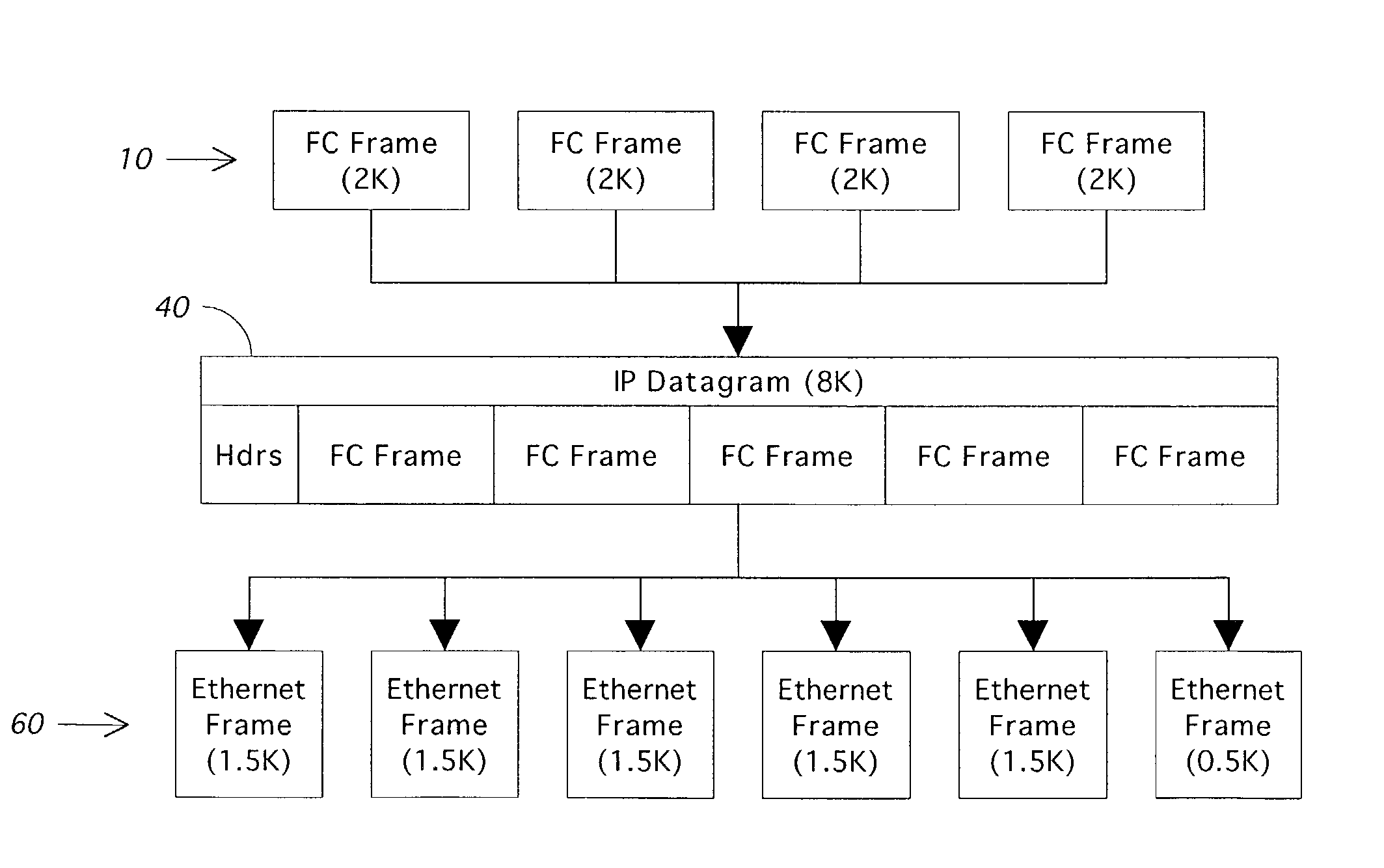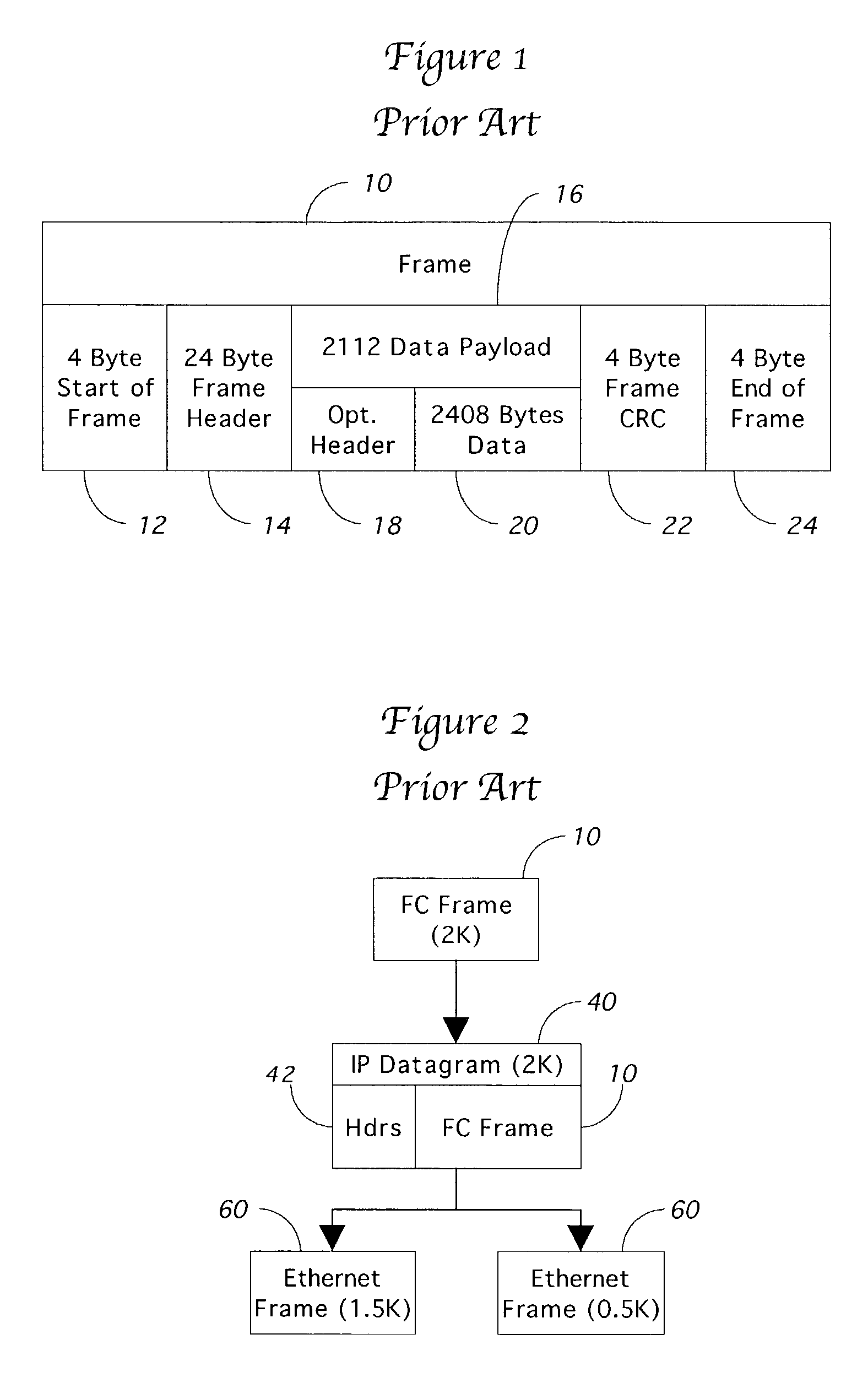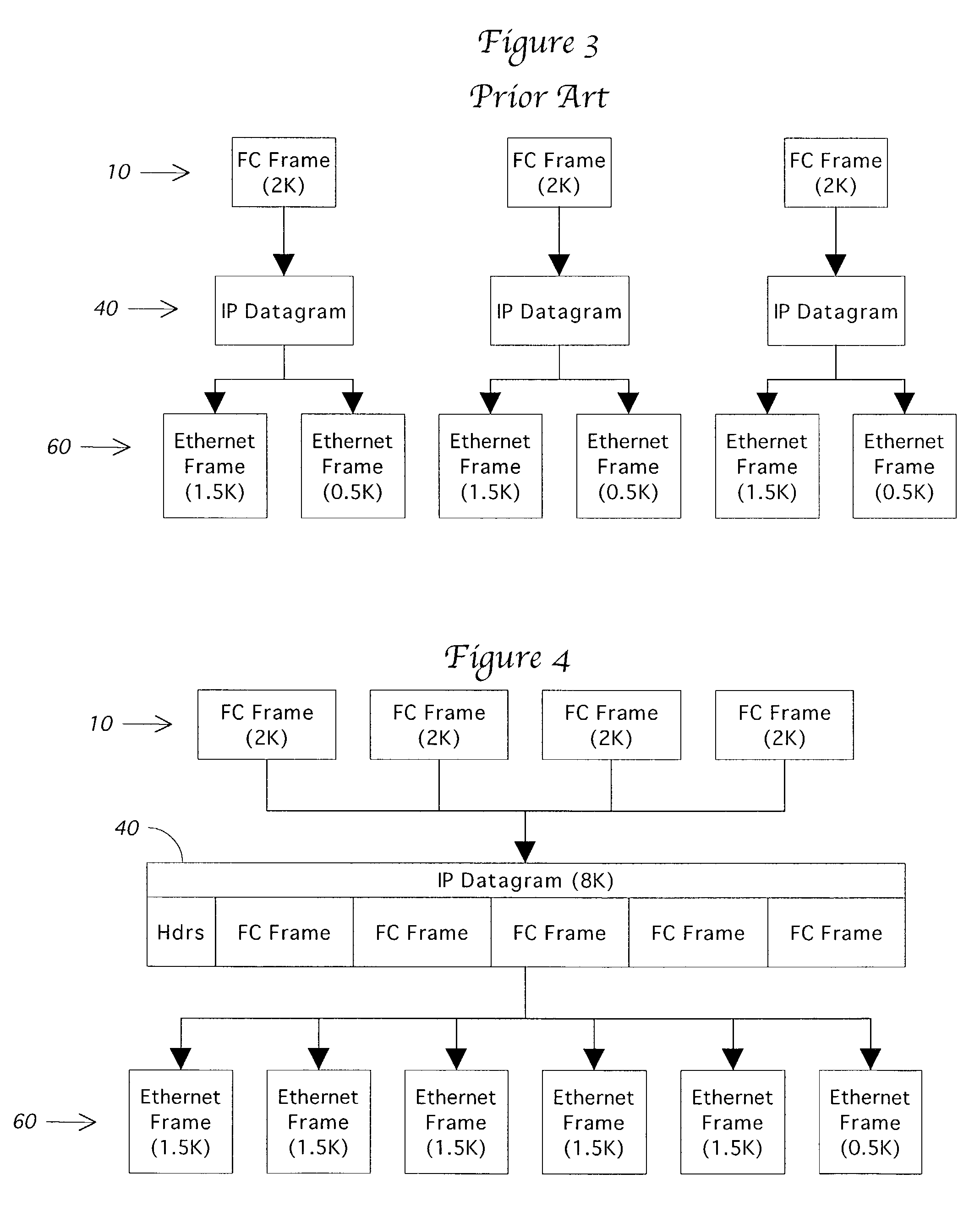Fibre channel frame batching for IP transmission
- Summary
- Abstract
- Description
- Claims
- Application Information
AI Technical Summary
Benefits of technology
Problems solved by technology
Method used
Image
Examples
Embodiment Construction
Prior Art
[0022]FIG. 2 shows the prior art relationship between Fibre Channel frames 10, Internet protocol datagrams 40 and data link level frames, such as Ethernet frames 60. To send a Fibre Channel frame 10 over an Internet network using Fibre Channel over IP technology, the frame 10 is “tunneled” through the network. In prior art FCIP implementations, this is accomplished by embedded each Fibre Channel frame 10 into a single IP datagram 40. The resulting IP datagram consists of headers 42 created by the transport layer (such as, but not exclusively, TCP) and the Internet protocol in combination with the embedded Fibre Channel frame 10. The IP datagram 40 is then sent over the physical network interface in the same manner as any other IP datagram 40. This means that the datagram 40 may be subject to fragmentation. Fragmentation is the process in which a single IP datagram 40 that is too large to be transported within a single data link frame 60 is divided into multiple frames. In F...
PUM
 Login to View More
Login to View More Abstract
Description
Claims
Application Information
 Login to View More
Login to View More - R&D
- Intellectual Property
- Life Sciences
- Materials
- Tech Scout
- Unparalleled Data Quality
- Higher Quality Content
- 60% Fewer Hallucinations
Browse by: Latest US Patents, China's latest patents, Technical Efficacy Thesaurus, Application Domain, Technology Topic, Popular Technical Reports.
© 2025 PatSnap. All rights reserved.Legal|Privacy policy|Modern Slavery Act Transparency Statement|Sitemap|About US| Contact US: help@patsnap.com



